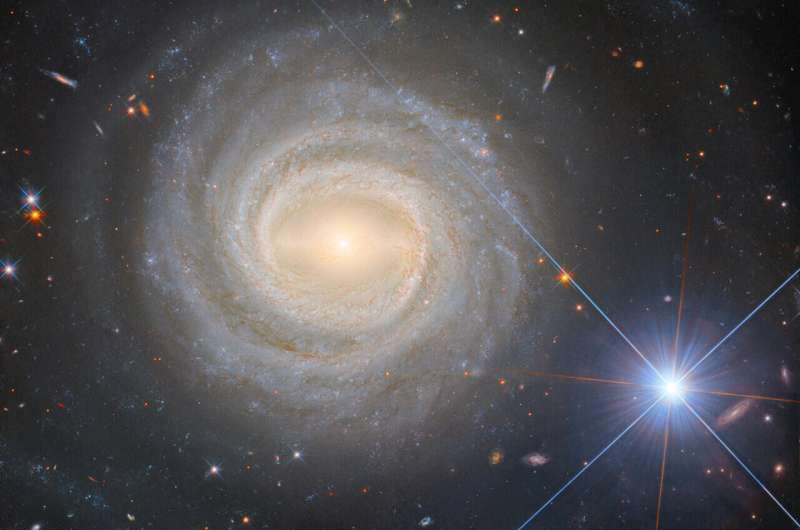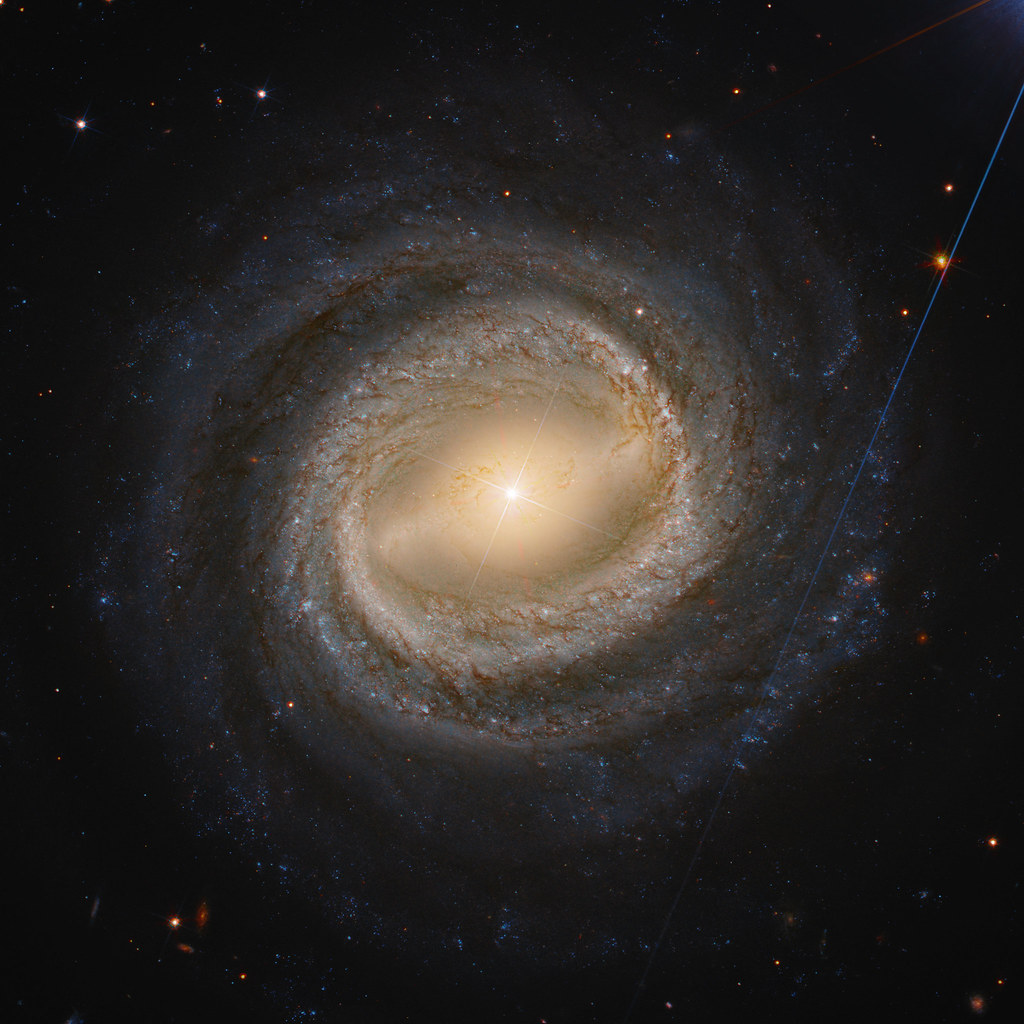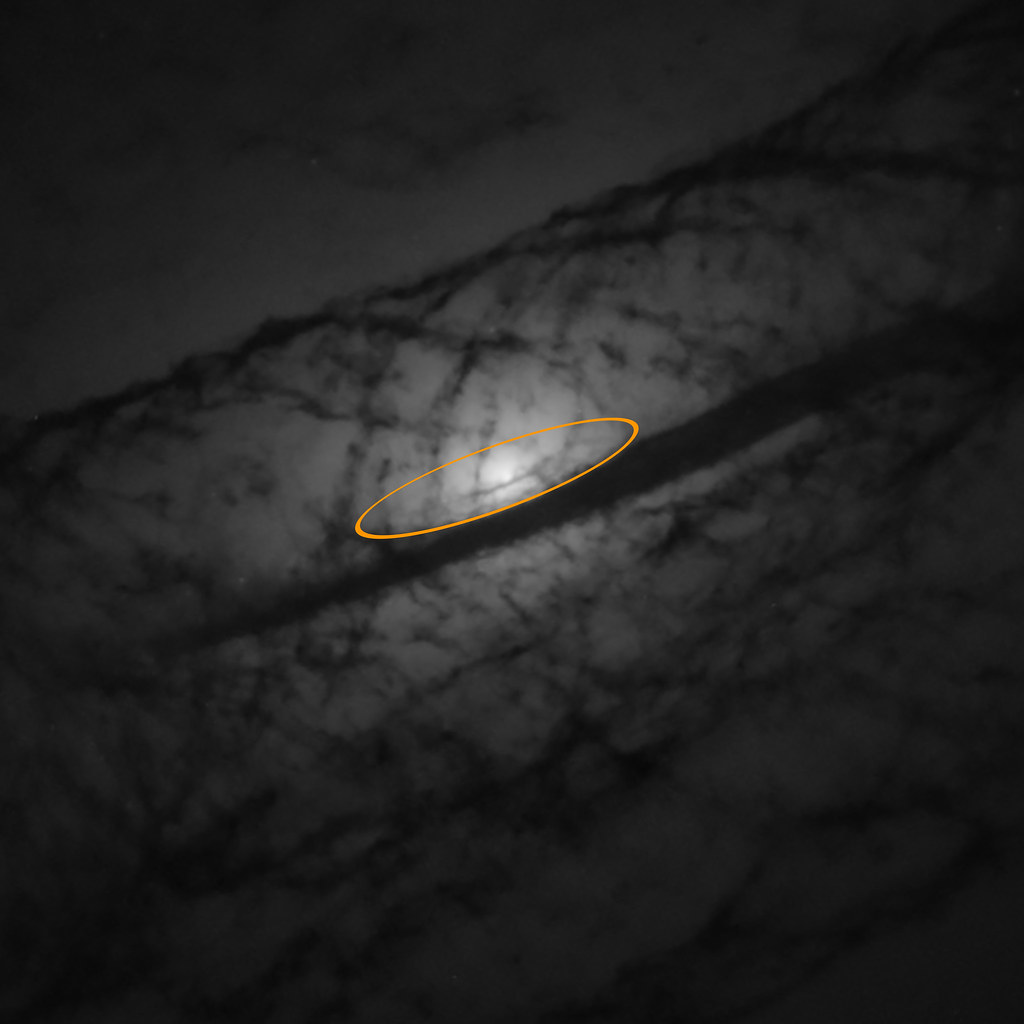AVAO wrote: ↑Wed Jun 26, 2024 7:44 pm
HST: NGC 3059 - A broad and narrow galactic view
NASA/ESA | Original release 2024 June 3
A spiral galaxy seen face-on, so that its many arms and its glowing, bar-shaped core can be easily seen. The arms are filled with bluish patches of older stars, pink patches where new stars are forming, and dark threads of dust. A few bright stars with cross-shaped diffraction spikes lie in the foreground.
This Picture of the Week features the barred spiral galaxy NGC 3059, which lies about 57 million light-years from Earth. The data used to compose this image were collected by Hubble in May 2024, as part of an observing programme that studied a number of galaxies. All the observations were made using the same range of filters: partially transparent materials that allow only very specific wavelengths of light to pass through.
...
read more
...
zoom
...
download
GOTD4Y Jac
Oh wow, Jac, that's gorgeous! That's glorious! I have to say it: There is no beating Hubble when it comes to producing beautiful space porn! All right, okay: There are some truly
stunning Webb images of dust structures in spiral galaxies. (Thanks, Judy!)
But all in all, Hubble makes the most beautiful space images (when it makes good use of its filters). For this image, it used no fewer than six filters: Two ultraviolet ones, one blue, one green, one infrared and one narrowband one designed to detect hydrogen alpha which is such a characteristic byproduct of star formation and the ultraviolet light of hot stars on gas clouds.
A few notes here. NGC 3059 is found in Carina, relatively close to the band of the Milky Way.
It is the second brightest galaxy in Carina, even though NGC 3059 is probably small-ish, and we can conclude that many other galaxies in this constellation are hidden behind the band of the Milky Way, also known as the Zone of Avoidance.
Let's return to NGC 3059. The galaxy has a short bar which is full of star formation! Note the large dust cloud in the rightmost part of the bar. But also note that the bar itself is blue-white in color, which means that the light of the bar is predominately emitted by hot blue-white stars. That's unusual, because most bars are very yellow in color and full of old red and yellow stars.
The bar of NGC 3059 is peppered with hot blue-white stars.
The bar of NGC 3059 looks like it is in the process of forming. It is very different from the bar of NGC 1300. Mature bars, such as the one in NGC 1300, are not only yellow in color, but they also contain two dust lanes stretching from the core of the galaxy to the beginning of the spiral arms. The bar of NGC 3059 contains no dust lanes, and, remarkably, the galaxy has no visible core. The fact that NGC 3059 lacks a visible core suggests to me that this galaxy can't be too big, and it can't contain a very big central black hole.
We have reason to believe that the bar of NGC 3059 is quite bright, considering it is quite full of very bright hot stars. For comparison, let's look at another galaxy whose bar contains star formation, but also contains old yellow stars:
Finally, I note that Hubble photographed NGC 3059 in May 2024, after it started having major problems with its gyros. Hooray! Hubble may not be operating at full capacity - it may be slower than before - but it is, at least, definitely back in business!


Ann















